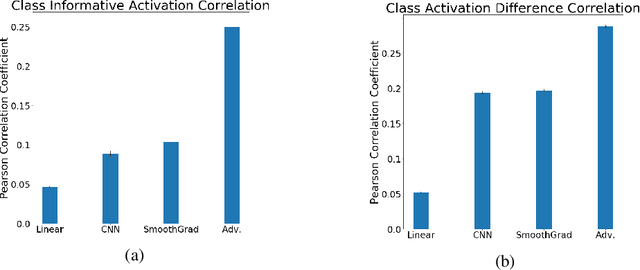Evaluating Adversarial Robustness for Deep Neural Network Interpretability using fMRI Decoding
Paper and Code
Apr 23, 2020



While deep neural networks (DNNs) are being increasingly used to make predictions from high-dimensional, complex data, they are widely seen as uninterpretable "black boxes", since it can be difficult to discover what input information is used to make predictions. This ability is particularly important for applications in cognitive neuroscience and neuroinformatics. A saliency map is a common approach for producing interpretable visualizations of the relative importance of input features for a prediction. However, many methods for creating these maps fail due to focusing too much on the input or being extremely sensitive to small input noise. It is also challenging to quantitatively evaluate how well saliency maps correspond to the truly relevant input information. In this paper, we develop two quantitative evaluation procedures for saliency methods, using the fact that the Human Connectome Project (HCP) dataset contains functional magnetic resonance imaging(fMRI) data from multiple tasks per subject to create ground truth saliency maps.We then introduce an adversarial training method that makes DNNs robust to small input noise, and use these evaluations to demonstrate that it greatly improves interpretability.
 Add to Chrome
Add to Chrome Add to Firefox
Add to Firefox Add to Edge
Add to Edge